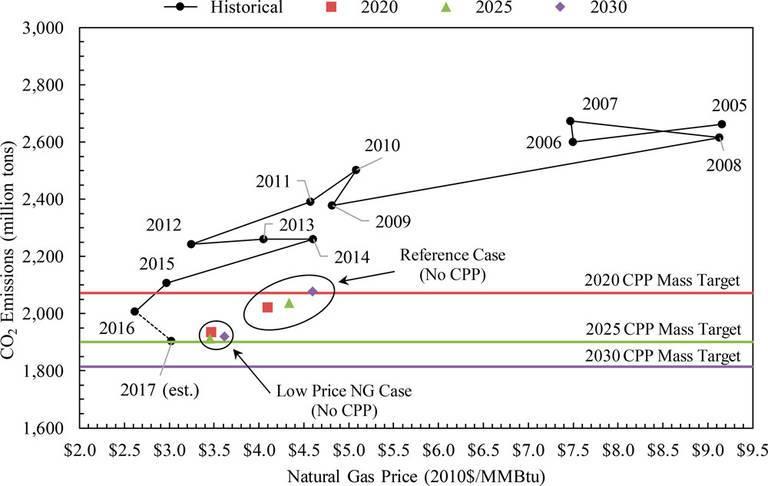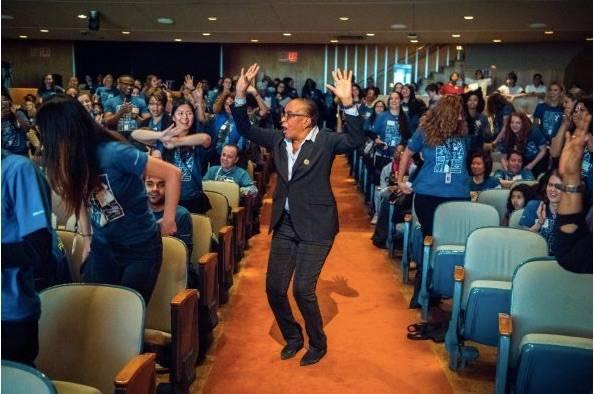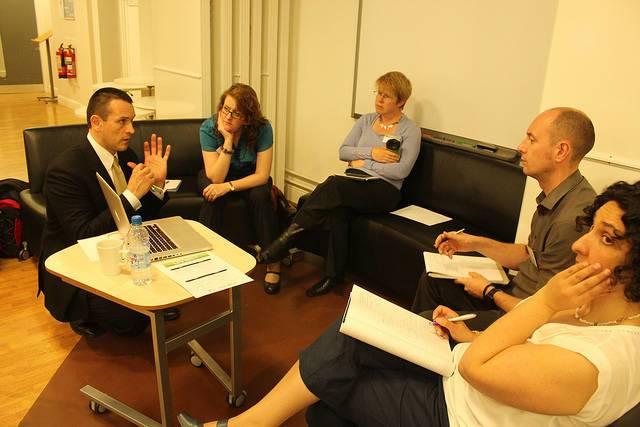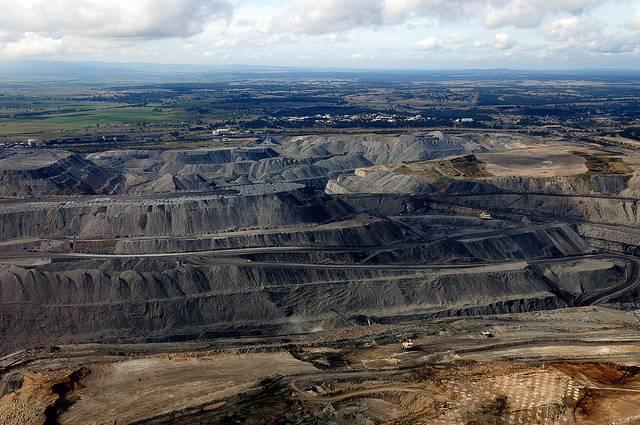Children and Their Families in Hospitals to Get $100 Million Boost from the Walt Disney Company


Hospitalized children are a social “issue” that deservedly gets support from many companies and non-profits. The stress of a seriously ill child causes major strains on families beyond the major medical issues. The hours spent in medical in institutions become the entire center of life for those involved, displacing home and workplace as the arena in which everyday living is experienced. Relieving that stress has become a focus of attention from The Walt Disney Company, and now, the company is making its concern concrete by contributing a turbocharged level of aid. Disney has just announced a $100 million, five-year plan to “reinvent the patient and family experience” in children’s hospitals around the world.
Leveraging its renowned “Imagineers”—the global experts in theme park and family entertainment design—the company will develop an array of distinctly “Disney” elements for children’s hospitals. Drawing on decades of creativity, Imagineers will use the company's iconic characters and stories to create many different touch points and experiences. Disney is working with a panel of medical experts, including doctors, nurses, hospital administrators, parents and child life professionals from around the world, to advise on the best ways to help hospitals create a more personalized and comforting experience for patients and families.
The first hospital to partner in this comprehensive approach is Texas Children’s Hospital in Houston, Texas. As the largest children’s hospital in the United States, and one recognized as a national leader in pediatric health, Texas Children’s will add its experience and insights in collaboration with Disney on these and other new experiences.
“Using the powerful combination of our beloved characters and legendary creativity, we’re planning to transform the patient experience in children’s hospitals around the world,” said Robert A. Iger, Chairman and Chief Executive Officer, “creating a personalized and engaging atmosphere that will inspire young patients and ease the stress of a hospital stay.”
Photo: Texas Children's Hospital
Originally published on 3BL Media.
What’s Really ‘Green’? A Look at Beef Finishing on Feedlots


By Jonathan Gelbard, Ph.D.
In my last post, I used a science-based green purchasing framework to evaluate sustainability of cattle grazing operations. The first two steps were to identify (1) key impacts of poorly managed ranches, and (2) solutions to each impact. Here I repeat this exercise for beef feedlots. Given the destructive consequences of industrial crop production, evaluating feedlot sustainability encompasses impacts and solutions related to feed supply chains.
What are Feedlots & Why It Matters How They are Managed
About 97% of U.S. cattle are “finished” on grain at feedlots, where they spend the last 4-6 months of their lives. The EPA defines feedlots (animal feeding operations; “AFOs”) as "agricultural enterprises where animals are…raised in confined situations. AFOs congregate animals, feed, manure and urine…and production operations on a small land area. Feed is brought to the animals rather than the animals grazing…" Feedlots become "concentrated animal feeding operations" (CAFOs) when they meet specific conditions, including size thresholds.
Sources of Feedlot Pollution: The USDA estimates that livestock produce 500 millions of tons of manure annually, over three times America’s 150 million tons of human sanitary waste. Most beef feedlots manage manure as solids in piles, with “catchment basins” storing polluted runoff. Others, including dairy operations that sell animals to beef processors, store manure as liquids in lagoons.
Manure management is often poor. A Duke University report found only half of large beef feedlots have manure management plans. Without effective planning and monitoring, manure contaminates waterways, poisons drinking water, and causes stomach-turning air pollution.
Producers can reduce these impacts by using science and practical knowledge to improve management. Below I summarize top environmental, health, and other impacts of poor feedlot management, and benefits of good management.
Surface & Groundwater Quality
Impacts of Poor Feedlot Management: Feedlots – including and beyond beef – account for an estimated 55% of sediment pollution and 30+% of nutrient pollution in America’s drinking water. Inadequately sealed and maintained manure runoff catchment and storage lagoons pollute thousands of miles of waterways and leak into aquifers. This pollution, along with runoff from farms that over-apply feedlot manure to crop fields (or apply it at the wrong time), may contain harmful chemicals including pesticides, antibiotics, hormones, and heavy metals. Nutrient pollution attributable to feedlots also occurs when they source feed from farms that over-apply fertilizer, further contributing to aquatic dead zones.
When manure nitrate pollution reaches aquifers, health impacts include diseases such as hyperthyroidism and diabetes, neurodevelopmental defects, and reproductive disorders such as blue baby syndrome.
Additionally, 10-50% of cattle transport dangerous pathogens such as Salmonella, E. coli O157-H57, and Cryptosporidium. In areas where farmers apply manure to fields, surface and ground waters face high risk of pathogen contamination. A study of water quality in agricultural regions found the highest levels of fecal coliform at sites near feedlots.
Benefits of Well-Managed Feedlots: Well-managed feedlots secure pollution permits and mitigate water quality risks. They implement a nutrient and manure management plan that details how the operation recycles nutrients, and balances nutrient inputs with use. Effective nutrient management plans:
- ensure feedlots properly manage and maintain manure runoff catchment basins and storage lagoons, and precisely apply manure to ensure crops uptake nutrients;
- use better management practices (BMPs) like riparian buffers and green strips along field edges (which filter runoff), storing solid manure on impermeable surfaces, and covering manure piles to reduce runoff pollution; and
- monitor water quality near manure storage facilities and following applications of manure and fertilizer to feed crops (at appropriate agronomic rates). This helps quickly detect and stop discharges, minimizing impacts to water quality and the health of animals and communities.
Operations that holistically demonstrate good manure and nutrient management also use feeds produced on farms that minimize water pollution. Looking at the big picture, reintegrating crop and livestock operations – fertilizing crops with animal waste and feeding animals crop wastes – is drawing renewed interest for its valuable benefits. These include reduced fertilizer and manure disposal costs, and protection against pollution-related risks.
The Climate Crisis
Impacts of Poor Feedlot Management: Beef feedlots contribute to climate disruption via emissions of heat-trapping enteric methane (from cattle belching), manure methane (from storage lagoons), and nitrous oxide (from stored and applied manure and, indirectly, from over-applying fertilizer to the feed crops they rely on). Additional sources of heat-trapping pollution include carbon dioxide from 1) agrochemical production, 2) soils by conversion of native ecosystems to feed croplands, and 3) poor management of feed crops (e.g., by degrading soils).
Benefits of Well-Managed Feedlots: Well-managed feedlots optimize herd health, manure and nutrient management to minimize climate-disrupting emissions. Whether they grow feed or externally source it, they use feeds produced by operations that precisely apply fertilizer, avoid conversion of native ecosystems to croplands, and use practices like cover crops that regenerate soil health and sequester carbon. Dairy operations that sell animals into beef supply chains (and hopefully soon more beef feedlots) also use anaerobic digesters to convert methane into energy, and sell digested manure as innovative fertilizer products. These and other climate-smart practices improve management quality, generate revenue, cut energy costs, and enhance resilience to extreme weather.
Air Quality
Impacts of Poor Feedlot Management: Decomposing manure produces 160+ different gases. Odorous volatile organic compounds (VOCs) such as hydrogen sulfide and ammonia cause profound health impacts to agricultural communities. Other pollutants include particulates and pathogens. Studies of communities near feedlots document increased rates of depression, anger and fatigue. People living next to an Iowa feedlot had high rates of breath shortness, nausea, dizziness, and headaches.
This pollution causes severe economic impacts. One study determined that Missouri CAFOs have lowered property values in surrounding communities by an average of $2.68 million.
Benefits of well-managed feedlots: Well-managed feedlots actively reduce air pollution. For example, facilities that manage manure as solids cover stockpiles to curtail odor and maintain facility humidity to minimize dust. Operations that manage manure as liquids cover lagoons, and use anaerobic digesters fitted with pollution control devices where necessary.
Antibiotic-Resistant Superbugs
Impacts of Poor Feedlot Management: America uses more antibiotics per pound of meat produced than any other nation. According to the Food and Drug Administration, 80% of antibiotics sold in the U.S. are fed to livestock. Of that, feedlots use about 70% for “non-therapeutic” purposes (routine feeding of antibiotics to healthy animals to prevent disease and promote growth). These misuses of antibiotics breed antibiotic-resistant superbugs, reducing the effectiveness of critical life-saving medications.
Benefits of Well-Managed Feedlots: Well-managed feedlots implement herd health, sanitation, and other good animal husbandry practices that prevent disease without using non-therapeutic antibiotics. For example, steps to prevent infection include avoiding excessive animal densities, since overcrowding facilitates disease transmission.
Native Fish, Wildlife & Plant Biodiversity
Impacts of Poor Feedlot Management:
- Water pollution from feedlots and feed croplands causes fish kills. In 2010, a CAFO in Iowa discharged effluent that killed over 100,000 fish, with the economic impact of lost fish, alone, estimated at $100,000.
- Nitrogen pollution of soils reduces biodiversity, worsens weed invasions, and increases use of herbicides toxic to fish and wildlife. Over-applying herbicides creates “superweeds”, escalating a cycle in which farms use increasingly harmful chemicals.
- Feed crops largely come from vast monoculture farms devoid of biodiversity. Many convert native ecosystems to croplands, destroying native plant and wildlife habitats. They also use controversial pesticides that endanger pollinators;
- Feed often includes genetically-modified grains that have been irresponsibly deployed without adequate field testing, resulting in unintended consequences such as declines in monarch butterflies;
- Even feedlot pharmaceutical use can harm fish and wildlife. Conservation Magazine reported that, “resistant bacteria have started spilling into the environment and trickling into a variety of species,” from marine mammals and seabirds to fish. As one researcher noted, “we’re finding similar pathology…in marine mammals to what we’re seeing in our livestock cases.” According to the article, “the pathway from factory farm to sea is likely manure that runs off into streams and ends up in the ocean.”
Benefits of Well-Managed Feedlots: Well-managed feedlots minimize impacts to biodiversity by managing and maintaining facilities to minimize pollution. They use BMPs such as vegetated riparian buffers to filter runoff, protect aquatic ecosystems, and provide habitat for pollinators, wildlife, and predators of pests. In addition, they source feed from farms that minimize pollution and avoid controversial pesticides.
Animal Welfare
Impacts of Poor Feedlot Management: Some feedlots are highlighted in the media as “factory farms” for graphically poor treatment of animals and given nicknames like “Cowschwitz”. There are far too many examples of inhumanely managed operations.
Benefits of Well-Managed Feedlots: Well-managed feedlots ensure high animal welfare through a herd health plan requiring proper nutrition, prompt resolution of health issues, low-stress handling, proper sanitation, record keeping, and overall good animal husbandry. Transportation to and from facilities is safe and humane.
Conclusion
You can make an important difference by purchasing beef from brands that reduce feedlot pollution, phase out non-therapeutic antibiotics, and treat animals humanely. As with grazing operations, it is critical to develop purchasing guidelines that avoid as many impacts as possible and drive business to more sustainable producers.
Emotions run high with feedlots. CAFO activists have launched far more devastating food brand-focused campaigns than groups combatting impacts of poorly-managed grazing. You don’t want it to be activists who expose gaps in your procurement guidelines. This is a big reason why many brands turn to independent, third-party certification to prove they have minimized impacts.
Next, I’ll explore the landscape of certifications and other eco-labels in the beef sector.
Jonathan L. Gelbard, Ph.D. is Principal and Senior Conservation Scientist at Conservation Value Solutions. As a researcher, writer, speaker, and advisor, he digs deep to identify root causes of problems, and catalyzes transformative solutions.
Dr. Gelbard was Senior Scientist at the Grasslands Alliance, a partnership between NGO’s, certifiers and ranchers that developed and piloted a comprehensive certification standard for U.S. and Canadian beef cattle and bison grazing operations. The Grasslands Alliance is currently fundraising to support its development of certification and continuous improvement programs. Click here to learn more.
Photo: Flickr Creative Commons
The US Could Still Meet Clean Power Plan Targets Without the Clean Power Plan


Certainly, the concerted efforts of the Trump administration to bolster the fortunes of their supporters in the fossil fuel industry through policy actions such as withdrawing from the Paris Climate Accord and dismantling the Clean Power Plan (CPP) have dealt a blow to the hopes of millions around the world that future climate catastrophe might be headed off, or at least mitigated.
Yet, hundreds of American cities, companies and other entities have pledged to uphold the targets and continue to make plans and manage their resources with the intent of meeting the target, despite the Federal government’s disengagement.
This parallels the game plan laid out recently by Bill McKibben in The Nation, where he states, “None of the strategies rely on Washington’s doing anything useful. In fact, because DC has emerged as the fossil-fuel industry’s impregnable fortress, our strategies look everywhere else for progress.”
So, people and institutions everywhere else become empowered, which is great, but the question remains, can the US still manage to meet its original commitment without the CPP, which was intended to provide a 32% reduction by 2030 from the electric power sector, which is roughly a third of the ultimate emission reduction of 26-28% (from 2005 levels) from all sectors committed to in Paris.
Looking at data from the US EIA’s 2017 Annual Energy Outlook report, a team of researchers at Carnegie Mellon University, (CMU) led by Paul Fischbeck, Professor, Social and Decision Sciences, Engineering and Public Policy, set out to answer this question, looking specifically at power sector emissions. The short answer turns out to be that it is, theoretically possible, at least in the short term. Since the movement would be depending largely on market forces more than government policy or good intentions for that matter, the cost trajectory for natural gas could very well be the deciding factor.
As indeed it has been. In fact, market forces have been such a pronounced influence on the electricity sector’s emissions profile, that as of today (estimated 2017 emissions, not yet finalized), we are already on track to meet the goal that the CPP had set for 2025! Of course, the population and presumably, the economy and therefore the demand for electricity will continue to grow between now and then. That means it could be harder to maintain that level than it was to achieve it. In spite of that rising demand, the EIA is projecting the emission levels in 2020 to be lower than the CPP target.
In the period between 2005 and 2017, CO2 emissions declined by roughly 30%. That’s the good news, and it is good news indeed. The not-so-good news which will not be surprising, is that it will take more than the current low natural gas prices to meet the 2030 target of 32%. Projections for 2025, also show that emission levels will not meet the CPP target unless natural gas prices fall further, which they are not expected to do.
Anyone following this issue closely knows that we still have a long way to go. The CPP targets are just one milepost on an early stretch of a long highway. To meet the temperature targets laid out in Paris, will require far more than coal plants converting to natural gas. People are finally talking about applying carbon capture and storage technology to natural gas power plants, but even that will provide power that is carbon neutral at best. Most experts now agree that a substantial amount of carbon negative activity will be required to meet the Paris goals.
The authors’ suggestion that in the absence of a CPP, the reductions have “relied solely on market forces,” is not entirely true, as a number of actions at state and local levels, such as renewable portfolio standards (RPS) have also had an impact. This study by Sekar and Sohngren at Ohio State claims a 4% RPS contribution through 2010.The tremendous growth in solar and wind, voluntarily sought out in both the commercial and residential markets have also played a role.
Looking ahead towards 2030, clearly more of that will be required. Aggressive action at the Federal level would certainly help, if directed wisely.
While regulatory actions at the Federal level would seem unlikely in the near-term, the Trump administration did approve a tax credit called 45Q for carbon capture and sequestration, a climate-positive measure that they clearly backed into, since the oil companies like to use the CO2 for enhanced oil recovery (EOR).
Image courtesy of Carnegie Mellon University
Investors Turn to Israel for SRI Opportunities


This article is sponsored by Maala and went through our normal editorial review process.
The drive for socially responsible investment (SRI) continues to gain support, both in developed and underdeveloped economies. According to the Global Sustainable Investment Alliance, as of 2016 more than $22 trillion in assets were being managed under various SRI strategies across the globe, with Europe, the United States and Canada taking the lead in recent years.
Interestingly, one country that is often left off the map when talking about the growth of SRI is Israel. Best known as an incubator for startup industries, it’s played a major role in revolutionizing the way today’s technology is used to address the world’s greatest environmental and social challenges. Companies like Netafim, Salt of the Earth, the Strauss Group and Shikun & Binui helped cement Israel’s standing on the Economist’s 2016 list of the world’s most socially innovative nations. They have also helped to affirm that environment, social and governance (ESG) factors can, and should have a role to play in the ranking of Israel’s most innovative companies.
In recognition of this growing focus, in November 2017 the Tel Aviv Stock Exchange (TASE) launched two new sustainable investment indices: Tel Bond-CPI Linked Maala and the Tel Bond-Shekel Maala. The move also dovetailed with a request by Israel’s Ministry of Finance’s capital markets commissioner to report on ESG considerations (link in Hebrew).
But incentivizing investment in Israel’s booming tech, food and agricultural sectors has not been without its challenges. Efforts by supporters of the boycott, divestment and sanctions (BDS) movement to discourage investment in Israeli companies has led to reticence by some investors, largely due to misinformation about Israel and its companies, said Sasja Beslik, head of Group Sustainable Finance for Nordea Bank in Stockholm, Sweden.
Nordea’s exposure in the French light rail company Veolia led Beslik to travel to Israel where the company was building Israel’s first light rail, the Red Line in Jerusalem. He said his trip helped form his perspective about the value of investing in Israeli companies that can demonstrate that they incorporate ESG practices into their performance. This trip, he said, affirmed the need for investors to do their own “on the ground” research themselves.
“I went to Israel twice and I met the corporate responsibility representatives [at Veolia],” Beslik said, while adding that the assertions that BDS supporters had made that the Red Line Rail was contravening the rights of Palestinians did not add up to what he saw. “We took the light railroad from end station to end station. There were a lot of people on the train. We made our own assessment of what this train is really contributing to.
“[We decided] to continue investing in Veolia, because we believe this train in Jerusalem is actually not anything out of line with our investments.”
But it’s also important to view investments in light of the social contributions they can make.
“Anything that leads to economic development everywhere in the world is good,” Beslik told listeners at the Maala 2017 Conference, How can Israeli Market Leaders Attract Sustainable Investors. “The way we need to see it from our perspective is to take away the politics and see what it actually means from the local perspective, what does it mean for the people and the local business?"
ESGs and investing in Israel
But just what makes a good, sustainable investment when it comes to Israeli companies? How do potential shareholders know their investments will meet today’s ethical standards when it comes to environmental, social and governance (ESG) criteria– the accepted benchmarks of sustainability in today’s marketplace?
Those are questions that Nordic investment rating companies deal with all the time, and not just when it comes to Israeli SRIs, said Anette Andersson. Andersson is a portfolio manager & ESG investment specialist for SEB Group in Stockholm, Sweden. She said that there is a strong movement in Nordic countries to encourage investors to be transparent and publicize their fossil fuel investments.
“[We] like to see companies report on their own carbon footprint so that we can tell our clients how much of their money is actually vested in carbon,” Andersson said.
As with Nordea, SEB’s assessment of sustainable companies is based on the information it receives about a company’s sustainable practices and principles, not on their geography.
“We judge companies by the same criteria regardless of where they are situated,” Andersson explained, “We like to see how they work, whether they are aligned with the sustainable development goals (SDGs).
And that’s where rating companies come in, said Ulrika Hasselgren, the former Global Head of Responsible Investment Strategy & ESG for Institutional Shareholder Services (ISS) in Stockholm (currently head of responsible investment at Danske Bank). ISS serves institutional investors and asset managers that are looking to invest in line with the sustainable investment policy and criteria. She said the UN Global Compact Framework (UNGCF), with its 10 principles covering environment, human rights, labour standards and anti-corruption isn’t the only set of benchmarks that a rating company or an investor, for that matter can use to assess a company’s goals and long-term potential, but it has become a commonly used framework.
Hasselgren said there are different perspectives among scoring agencies as to the best way to gauge how a company manages its environmental, social and governance risks. While many rating agencies will rely on questionnaires and interviews to determine a company’s risk factors, ISS always bases its assessment on publicly available data and information from the company and other open sources, including the company’s website, annual and sustainability reports.
But assessing a company’s governance and sustainability performance can still be challenging when it comes to interpreting and appreciating a company’s commitment to ESG, she said.
"Many companies around the world have signed up to the UNGC. They report on their support for the principles and what they do in each area; e.g. improving labor standards, implementing anti-corruption programs, dealing with environmental impact and upholding human rights” said Hasselgren.
“These companies may then be approached by rating agencies and other organizations suggesting that the companies, according to their assessment, are breaching the principles of the UNGC.,’ The different interpretation of a common framework, such as the UNGC naturally is a challenge to deal with for companies .”
Hasselgren pointed out that because the UNGC is a voluntary set of principles, the onus is often left to the company to determine how to apply the principles. But an experienced investment specialist will take those deliberations into account.
Andersson added that many investment firms, SEB included, will rely directly on the rating agencies’ scores to determine whether a company is a good investment fit for their clients.
Keeping up with UNGCF reporting is important to being considered a good investment risk.
“[It] is kind of essential for companies to get reasonable scoring because otherwise they are going to get excluded from the investment universe just by poor performance,” Andersson said, and added that poor performance doesn’t necessarily mean a company is failing, just that “there’s no reporting we can find.”
Good communication can drive investment
And when it comes to attracting investors, said Hasselgren, disclosure and communication can be key. Making sure that the website contains information in English makes it easier for rating agencies to make a correct assessment. Doing so also sends a signal to investors that the company is transparent, wants engagement and supports foreign investment.
But Hasselgren said transparency is a two-way street, too.
“Rating companies need to be transparent on their approach, [what] they are asking and why they are asking it, so that Israeli companies understand what they are supposed to answer and how they can respond in a meaningful way,” said Hasselgren.
She said understanding the nuanced setting is important. “I think that many Israeli companies have been approached by rating agencies and other organizations asking particular questions based on an already made assumption of the company’s standard or performance. That, of course, doesn’t really give room for an open and constructive dialogue.”
The business case for investing in Israel
Beslik also challenged other investment firms that may have reservations about investing in Israel or Israeli projects, to do their homework first, as Nordea has done.
“You know, in most of the companies that have excluded Israeli companies in the world, most investment managers have never been to Israel. And they have never seen what we have seen and I think my proposal to them would be to actually do that,” said Beslik. “[The] economic benefit of all the investments in Israel is an economic benefit for all of the people living in that area, regardless of who they are.”
Investing in Israeli innovation, Andersson said is more than a means to good returns. “It ties back to the SDGs (sustainable development goals) because if we are going to reach the goals, there has to be a lot of innovation to resolve the huge issues that we have around the world right now,” like energy efficiency for example. Transparency and collaboration on both sides, opens the pathway to better use of resources, said Andersson.
Hasselgren’s advice to Israeli companies is to be forthcoming and “tell their stories” so rating companies and investors can appreciate the effort they are making in ESG. “[There] are multiple ways you can tell the story,” said Hasselgren,
Whether it’s relating how a company adheres to the UN Global Compact, the environmental or social strategies they are using to better the world, she said, transparency and communication are key to success for both companies and investors.
Images: Yohav Zohar/Maala; Flickr/Terrazzo; Sharon Amit/Maala
5th Annual Young Women’s Leadership Summit Hosted by Bloomberg


By Bloomberg
On Saturday, March 3, Bloomberg hosted its 5th annual Startup Young Women’s Leadership Summit, convening 500 high school and college-aged girls at the Metropolitan Museum of Art for a day of networking and mentoring. More than 200 employees in the Bloomberg Startup program joined together with students from 34 diverse partner organizations, including CUNY’s Macaulay Honor College, the Young Women’s Leadership Network, PENCIL, and our partner school University Heights High School, Girls Who Invest, the Ghetto Film School, and other high schools that participate in our FIRST Robotics programs.
“Bloomberg’s Young Women’s Leadership Summit provided our students with unique access and opportunities to connect with professionals in their aspiring fields in an incredible New York cultural institution like the Met. Over 4 years, we’ve seen this event grow and provide new ways to engage our students while inspiring our next generation of leaders,” said Andrea Shapiro Davis, Associate Vice Chancellor, City University of New York.
“Bloomberg employees have shown a real commitment to connecting students at University Heights High School to success by helping to support our young people as they prepare for college and careers. Through the PENCIL partnership, our students are offered opportunities for internships, scholarships, unique workshops, group mentoring, and invitations to attend events such as the Young Women’s Summit helping them expand their horizons and envision great futures,” Gregg Betheil, President, PENCIL.
The event, in partnership with the Bloomberg Women’s Community and Bloomberg Startup, featured a screening of the Sundance Film Festival’s award-winning film, STEP, which was followed by a special performance and discussion with Amanda Lipitz, the director of STEP.
STEP chronicles the true story of a Baltimore-based girls’ high school step team who are empowered on and off the stage by teachers, teammates, coaches, and families in the pursuit of their ultimate dreams: to win a step championship and get accepted to college. The documentary examines how one school is reshaping the futures of its students’ lives by making it a goal to have every member of the senior class get accepted to and graduate from college. For many, they are the first person in their family to do so. Watch the trailer here. The film, supported by Bloomberg Philanthropies, premiered at the Sundance Film Festival in 2017.
Throughout the month of March, Bloomberg is celebrating International Women’s Day and the social, economic, cultural and political achievements of women at events across the globe. These will include professional workshops, mentoring discussions with female leaders, volunteer opportunities that directly help women, male advocacy panels, and cultural events. At Bloomberg, we are committed to making a lasting impact on the lives of women around the world, through valuable career development opportunities for our colleagues, our support of global health and wellness programs and initiatives like the Bloomberg Gender Equality Index.
Photo: Bloomberg
Originally posted on Bloomberg and distributed by 3BL Media.
Wanted: Ways to Communicate a New Direction for Workplace Ethics


There has been a lot of talk about the recent “Me Too” and “Time’s Up” movements, but at least one organization insists those words still need to be followed up by more action. The Ethics and Compliance Initiative (ECI) recently said its research shows 18 percent of U.S. employees have observed abusive or intimidating behavior in the workplace; 7 percent of these same employees have witnessed at least one act of sexual harassment, but 37 percent of these employees surveyed who saw such misconduct at work have also said they have not reported it.
These problems may vary across major economies worldwide, but ECI says that the impact that culture, leadership and values-based ethics and compliance (or E&C) programs within an organization can make a huge difference in motivating employees to report workplace misconduct - of course, if they feel they can do so without retaliation.
In an op-ed published earlier this year on Forbes, Susan McPherson described beginning of the end of harassment and inequality in the workplace was one of eight corporate responsibility trends to watch this year.
But how companies achieve and communicate these efforts in the coming years and months will be a challenge. After all, any organization that is taking on these challenges cannot exactly boast that “we are stopping harassment and retaliation in the workplace.” We aren’t talking about measuring carbon emissions, counting volunteering hours or raising wages here.
But there are ways of showing that the old ways of doing business are over, and the list of companies who are trying to break through with their creativity is getting longer.
One obvious standout example was given during this month’s Academy Awards broadcast by Nike, which produced an advertisement with Serena Williams explaining “there’s no wrong way to be a woman.” But there other strategies that can help all of society push forward on this movement.
Getting more women on corporate boards is one way in which organizations can ensure that these messages are drilled from the top of an organization down in order to change attitudes, policies and minds. And while many companies are stepping over each other to show how they can appeal to millennials, going against the grain and fighting ageism also can help fight this problem while inspiring a younger generation of workers - as discussed in a recent Chatham House study.
Finally, taking on workplace harassment and intimidation needs to go far beyond the office parks and skyscrapers in developing countries: such behavior needs to be stamped out of supply chains worldwide. One company that says it is addressing this issue is Twinings; the tea giant claims it strives to work closely with vulnerable tea growers, the majority of which are women.
The problem of workplace harassment is not complicated to call out, as this bad behavior has been going on for decades, even centuries. But this elimination of ingrained behaviors is proving to be a complex task. So we turn to our readers: how are your organizations standing out when it comes to eliminating workplace harassment and retaliation, while communicating these efforts both externally and internally?
Image credit: Time’s Up Now
How an Olympic Mindset Can Empower Social Impact Leaders


By Nikki Korn
Watching the Olympics last month, we saw athletes from all parts of the world pursue their goals without letting anything or anyone get in the way. Their commitment and mindset teach us essential lessons for how we, as social impact professionals, must approach our work every day.
Here are four lessons that inspire me and hopefully will empower you:
1. Persevere: It is crucial to stay the course and be resilient as we face adversity and challenges in driving our change agendas. I get it, it’s not always easy to build social impact into your brand, get the funding you desire, or have your partnerships deliver exactly the way you like. Olympians would say press on, get up from the fall, engage the right teammates and find your moxie to relentlessly pursue your goals.
2. Commit to Training: Our work isn’t easy and the learning curve can be steep. As social impact leaders, we have to commit to ongoing training to be our best. We must practice being better listeners, students and risk takers. This commitment to focused, intentional learning is imperative as our work and societal issues get more complicated.
3. Create Unity: Let’s celebrate North and South Koreans walking together at the opening ceremonies and athletes from 93 countries sharing an Olympic Village while many face conflict, war and hate in their homelands. We must work harder to find common ground for how we can tackle critical social issues; work even more collaboratively with our partners and invest in ideas that unite and mobilize employees and consumers across the globe. It’s also essential for us to invite unexpected players to join us on our journeys.
4. Embrace Great Coaches: Not one Olympian arrived at the Games without the help of great coaches. We all need people to support us, help us troubleshoot, listen to us vent, and, push us to persevere, train and create unity. Social impact work is intense, exciting and hard; it is not possible to go it alone.
These athlete-inspired insights keep my energy high and my mind laser-focused as I coach and collaborate with social impact leaders. Let’s each wake up with the same Olympian mindset and fire as we seek to improve lives around the world.
Nikki Korn is the Principal and Chief Strategy Officer of Cause Consulting, a social impact strategy and communications firm dedicated to simultaneously strengthening business and impacting society.
When Disaster Strikes: Companies Plan for Employee Catastrophic Assistance


If there is any positive takeaway from last year’s unexpected climate events, it’s that emergency response networks can and are learning how to adapt to meet the challenges of natural disasters.
The joint efforts of Michigan’s and Florida’s 2-1-1 emergency systems that helped guide entire communities away from Hurricane Irma in South Florida last December were proof that public-private partnerships can help save millions of lives if they have networks and resources already in place.
Businesses are learning that finding ways to innovate and harness their own individual strengths to help people when public resources aren’t readily available can make a difference as well.
As two companies found last fall, those benefits can also come full circle. Businesses that have networks and funding mechanisms in place to support their employees when disaster strikes are better equipped to meet their own long-term staffing.
In the following cases, the corporations highlighted relied on experienced third-party partners who could manage disaster funds, provide insight on how best to fundraise and disburse grants that were needed quickly by employees affected by disaster.
Southwest Airlines: Supporting staff keeps networks resilient
Last year’s hurricane season wasn’t the first that Southwest Airlines found itself scrambling to prepare for. Hurricane Matthew, which affected its flight operations in Florida, the eastern seaboard, the Bahamas and South America in 2016, and Hurricane Ike, which leveled substantial damage to Texas and other regions in 2008, were both learning experiences for the airline. In both cases, the storms affected not just the incoming and outgoing flights of an airport, but important hub operations within its region and beyond.
But Harvey, which barreled ashore last August as a tropical storm, quickly submerged entire neighborhoods. Megan Lee, Southwest Airlines’ senior manager of community outreach explained that, within hours, the roads around Houston’s Hobby Airport, the state’s third-busiest airport, began to flood, stranding passengers, staff and flights.
“The operational impacts [of Harvey] were huge for us,” said Lee, who noted that the closure of the airport lasted almost a week and ultimately started a “domino effect” that impacted operations across the nation. The closure meant that pilots and flight attendants wouldn’t be able to get to reassigned airports and planes couldn’t be reassigned to other airports, either.
“Those are all the airplanes we expected to use somewhere else. Southwest has a really high fleet utilization percentage, so we don’t have a lot of spare aircraft sitting around,” said Lee. Other stations would have to cope without the added fleets.
But the airline was also faced with the realization that many of its Houston staff would be facing dire problems of their own. More than 4,000 employees lived in the Houston area. As flooding increased, many of those employees could be facing extensive damage to their homes that would eventually force them to seek alternative shelter.
The airline’s private charity organization was called into action. Thankfully, Southwest already had a charity organization in place to help employees in need. Its 501(c)(3) Employee Catastrophic Assistance Charity had been implemented in the 1990s. Funded largely by employee donations, it was able to launch into action immediately and funnel one-time grants to staff members affected by Harvey.
“But [we] were also drawing a lot of cash in a very short amount of time out of the charity,” explained Lee, “which is where the idea to have a telethon was born.” A network-wide telethon meant that with the right technology, all 56,000 employees could potentially help replenish funds for storm victims in need.
But that too, presented a challenge. The charity wasn’t set up to take one-time donations, such as during a telethon. It was structured to accept payroll deductions. Plus, the demand from Harvey was huge. Southwest turned to Silicon Valley Community Foundation (SVCF), an organization that managed other Southwest funds, and asked for help.
With SVCF’s assistance, Southwest was able to set up a specific fund that would accept credit card payments and direct the funds into the charity. It could also oversee disbursements as well, ensuring that donor recipients received their grants quickly.
The new telethon was almost a prescient step.
“We set up the telethon with SVCF right in the thick of Harvey,” said Lee. “[While] we were running the telethon that day, we were watching Hurricane Irma approach Florida, the Caymans and other islands. And then right up behind that was Maria.” The telethon helped raise funding to not only help Harvey victims, but lend support to employees affected by Irma and Maria. While Irma had a comparatively short-term impact on Southwest’s operations, Maria, which devastated San Juan, resulted in long-term impacts on Southwest’s operations and its resident employees. The fund is still handling catastrophic assistance to hurricane victims.
But raising funds to support Southwest employees wasn’t anything that unusual for the company or its staff, said Lee. “We really just leaned on our culture. I think this is why we have this wonderful, longstanding charity that supports employees. It has always been a priority for us to put our employees first and take care of our own.”
“I think the one thing we’ve learned is that no two disasters are alike. You try to learn what you can from everyone and continually improve your process and your knowledge,” said Lee. But being proactive and having a third-party system in place can help both the company and the employees cope with the unexpected need for catastrophic assistance.
VIAVI Solutions: Support network for California fire victims
The potential to fund innovative employee programs isn’t limited to companies as large as Southwest. Technology companies with local reach and a vested interest in protecting staff also sought out ways to help during disasters.
One such company is VIAVI Solutions, a global leader in network and service enablement and optical technologies. Today, VIAVI Solutions’ two business segments serve some of the world’s best-known brands. The world’s largest network providers, governments, and industries ranging from aerospace to pharmaceuticals rely on VIAVI to help them deliver high-quality, secure, mission-critical products and services to their customers.
Its Santa Rosa facility, with over 480 employees found itself on the edge of the “California Inferno” this October, when the Tubbs fire swept through the area.
VIAVI Solutions’ Senior Vice President of Human Resources Petra Nagel said more than 100 employees were affected by the fire.
“Over 20 employee families lost their homes, and nothing was salvageable,” said Nagel, who said that others were forced to seek shelter in evacuation centers while emergency responders fought to save their neighborhoods. The Tubbs fire was only one of many that raged in Northern California during the summer of 2017, but it leveled closely knit neighborhoods in a space of hours.
The immediate outpouring of concern by company employees who were not affected by the fires was notable, said Nagel, and became the backbone of VIAVI’s efforts to set up an emergency relief fund in the months that followed.
“For those who lost homes, any and all support was necessary. During the first few days following the fire, unaffected employees offered rooms in their homes for others who were displaced.”
Because VIAVI’s office structure was unaffected by the fire, “it became a spot for families to come for food and supplies” while local communities assessed their options regarding if and how they would eventually be able to rebuild.
“Once temporary housing and other basic needs were met,” said Nagel, “financial support became the primary need.”
The corporation made an initial donation and then offered to match all employee donations dollar-to-dollar. Employees, as well as customers, from across the globe responded. To date, Nagel said, the fund has raised over $320,000 and donations continue to come in.
The company used its internal communication networks, email blasts, company events and other methods to alert staff of the funding campaign. And like Southwest Airlines, it realized that coordinating the disbursement of those funds through a third-party organization not only made it easier for the company, but also added oversight and credibility to each stage of the process.
“A committee was formed led by SVCF to make the necessary decision and arrangements around the fund parameters, the length of the campaign, the application process, the communications and fund distribution. The program was online and accepting donations within two weeks after the disaster,” explained Nagel, who added that partnering with an organization like SVCF added speed to the process, ensuring that employees in need received assistance quickly.
The takeaway lesson from the California fires, Nagel said, is that it pays for companies to be proactive. “Set up a program in advance of necessity,” she said. “We never imagined we would encounter a tragedy of this magnitude, and we were fortunate to be introduced to experts to help take the lead during a time of crisis.”
How to Make CSR Everyone’s Responsibility


By Tim McClimon
Do you believe that corporate social responsibility is important to your company, but that it’s someone else’s problem?
A recent Harvard Business Review article entitled “How to Make Sustainability Every Employee’s Responsibility” posits that question (albeit substituting “sustainability” for “corporate social responsibility”) and suggests that while many companies talk about sustainability and integration, it’s much harder to get people to act individually to achieve these corporate goals.
Author CB Bhattacharya attributes this syndrome of thinking that an issue is someone else’s problem as one of ownership. He suggests that ownership refers to feelings of connection that we develop toward an appealing object such as a company or idea, and that feelings of organizational ownership can lead to greater job satisfaction, engagement, productivity and profits for employees and stakeholders. He asserts that companies can gain competitive advantage by transforming their stakeholders from bystanders into owners by making sustainability – or social good – part of their purpose by using a framework with three phases: incubate, launch and entrench.
The incubation phase outlines your CSR approach by reflecting on the purpose of your business and its specific role in the world, and then creating a list of material issues across your value chain. This kind of materiality assessment can identify opportunities for stakeholders to take ownership of your goals and to drive action across the organization in ways that are important to your business.
The launch phase entails introducing your plan to stakeholders and setting the idea of ownership in action. To sell it to employees and other stakeholders, the author asserts, sometimes you have to appeal to the head (e.g., monetary incentives, cost savings, career advancement) and sometimes to the heart (e.g., making a difference, helping society), and often to both.
The entrenchment phase works to make these feelings of ownership routine – something that people just do rather than something they are expected to do. Here, having measures of success and providing ongoing feedback helps to integrate these actions into the daily routine of stakeholders.
For example, a goal of reducing a firm’s carbon footprint can be identified first as an important purpose for the business, and then that goal can be subdivided into specific objectives pertaining to electricity use in buildings, employee travel, and even waste management, which have both positive monetary impact (e.g., cost savings) as well as societal benefit (e.g., taking poisonous carbon out of the atmosphere). Demonstrating how individual and teams of employees and stakeholders can have an impact on the overall carbon footprint with their actions can drive personal ownership and impact at all levels of the organization.
Likewise, engaging employees and customers in community service shouldn’t just be the province of the CSR office; it can be and should be a corporate wide responsibility with many owners and players. While the CSR office can be instrumental at setting a firm-wide goal, establishing measures of success and launching volunteer programs, the more employees and their friends and family members take ownership and entrench volunteerism and community service into their daily routines, the more integrated it will be for the firm, and the more success the company will have at making community service part of the corporate culture.
Tim McClimon is SVP, Corporate Social Responsibility, American Express, and President of the American Express Foundation
Photo: Flickr Creative Commons
This article originally published on CSR Now/American Express and distributed by 3BL Media.
RepRisk’s Database Now Includes ESG Data on 25,000 Projects


RepRisk, a research and business intelligence provider, has announced a major expansion in its coverage, based on its issues- and event-driven research process.
“In addition to over 100,000 public and private companies, our platform now also includes over 25,000 projects,” says Nicole Streuli-Fuerst, Executive VP Operations and Research at RepRisk.
The firm uses Ai and human analysis to focus on companies and projects exposed to risk through environmental, social, and governance issues. As part of its new research, RepRisk says that projects such as mines, pipelines, factories, and chemical plants can bear significant ESG risks.
Adds Alexandra Mihailescu Cichon, Executive VP Sales and Marketing: “Being able to access information on infrastructure projects is particularly important to our clients in the banking and insurance industries. Furthermore, corporates use RepRisk data to evaluate ESG risks in their supply chain. With the help of our data, which spans all countries and sectors, clients can assess overall project portfolio risks.”
Photo: Flickr Creative Commons